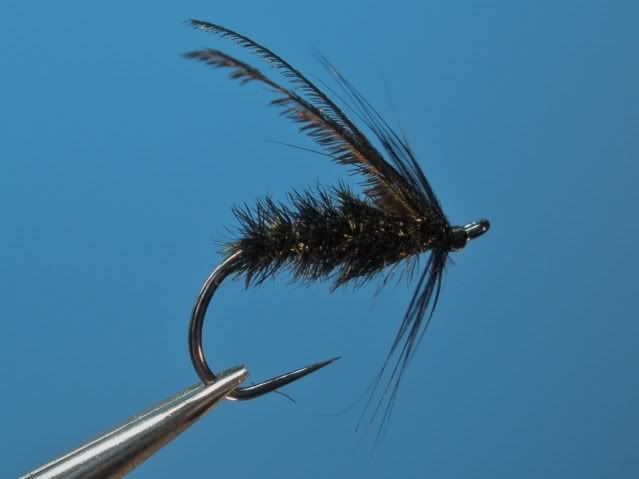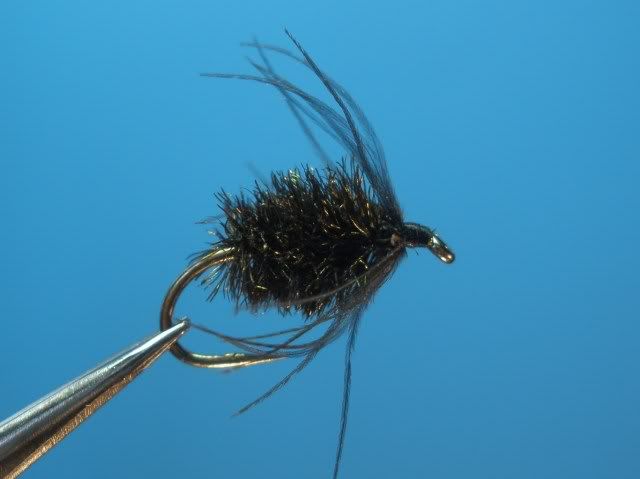Grounds for Expulsion
Moderators: letumgo, William Anderson
-
DUBBN
Re: Grounds for Expulsion
I am not trying to be a smart alic, this time...Have you thought about adding rubber legs? It would keep the patterns from flipping over.
- letumgo
- Site Admin
- Posts: 13342
- Joined: Sat Feb 21, 2009 7:55 pm
- Location: Buffalo, New York
- Contact:
Re: Grounds for Expulsion
Good idea. Thanks Wayne.
Ray (letumgo)----<°))))))><
http://www.flytyingforum.com/index.php? ... er=letumgo
"The world is perfect. Appreciate the details." - Dean
http://www.flytyingforum.com/index.php? ... er=letumgo
"The world is perfect. Appreciate the details." - Dean
-
Mataura mayfly
- Posts: 3648
- Joined: Thu Oct 27, 2011 6:28 am
- Location: Southland, South Island, New Zealand.
Re: Grounds for Expulsion
Ray,
From my limited observations here if you fish these styles in water with any sort of current or slightly volatile turbulance they tumble, but so do the naturals. The naturals also do not live for too long when tumbling and end up in the slacker water in all shapes and positions, but usually float just sub surface for quite a while, often with one or both wing cases at an angle to the body.
Bronze peacock herl is one of my favoured bodies for beetles, have never tried CDC, but that was an interesting experiment of yours.
From my limited observations here if you fish these styles in water with any sort of current or slightly volatile turbulance they tumble, but so do the naturals. The naturals also do not live for too long when tumbling and end up in the slacker water in all shapes and positions, but usually float just sub surface for quite a while, often with one or both wing cases at an angle to the body.
Bronze peacock herl is one of my favoured bodies for beetles, have never tried CDC, but that was an interesting experiment of yours.
"Listen to the sound of the river and you will get a trout".... Irish proverb.
- letumgo
- Site Admin
- Posts: 13342
- Joined: Sat Feb 21, 2009 7:55 pm
- Location: Buffalo, New York
- Contact:
Re: Grounds for Expulsion
Jeff - You comment about the wings is interesting. I have a neat technique for making raffia wings. They might look cool on this pattern.
Thanks Scott. The heavier hook is a good suggestion, worth a try anyways.
Thanks Scott. The heavier hook is a good suggestion, worth a try anyways.
Ray (letumgo)----<°))))))><
http://www.flytyingforum.com/index.php? ... er=letumgo
"The world is perfect. Appreciate the details." - Dean
http://www.flytyingforum.com/index.php? ... er=letumgo
"The world is perfect. Appreciate the details." - Dean
Re: Grounds for Expulsion
I second the comment about trying rubber legs on it.
-
Mataura mayfly
- Posts: 3648
- Joined: Thu Oct 27, 2011 6:28 am
- Location: Southland, South Island, New Zealand.
Re: Grounds for Expulsion
Ray, not saying thta yours will behave the same as our beetles, but I imagine as they are not aquatic they would suffer the same.
Adding weight, heavier hook or a strip of lead may make your 2/3 floater be a full sinker?
It is hard to make a top of hook tie like that and have it sit perfect on the water, the centre of gravity is a bit high. One option you might want to try if you can find a very wide gape hook and tie the fly on the side so the hook lies parallel to the water surface. Not easy with this kind of tie..... but I use it for foam sawfly grub patterns so the hook does not break the surface film and sink the fly.
Adding weight, heavier hook or a strip of lead may make your 2/3 floater be a full sinker?
It is hard to make a top of hook tie like that and have it sit perfect on the water, the centre of gravity is a bit high. One option you might want to try if you can find a very wide gape hook and tie the fly on the side so the hook lies parallel to the water surface. Not easy with this kind of tie..... but I use it for foam sawfly grub patterns so the hook does not break the surface film and sink the fly.
"Listen to the sound of the river and you will get a trout".... Irish proverb.
- fly_fischa
- Posts: 604
- Joined: Sun Nov 08, 2009 9:01 pm
- Location: Melbourne Australia
Re: Grounds for Expulsion
Nice looking soft hackle beetle Ray, even if the soft hackle name is a bit optimistic 
I think the capsized beetle will be pretty effective, as Mataura Mayfly already pointed out the naturals often end up floating belly up. To combat the gravity issue I remembered an article in Flylife an Aussie mag, featuring a lady from Tassy called Jan Spencer. From memory she tied two beetle patterns including a Jassid. What was unique about the pattern was the plump juicy profile created by not only pulling a foam back forward but by replicating the same underneath before tying a hackle collar at the front. I think this technique would look good in a two tone foam effect with your soft hackles sandwiched between the foam, then the legs would poke out the sides like the naturals. Food for thought...
I think the capsized beetle will be pretty effective, as Mataura Mayfly already pointed out the naturals often end up floating belly up. To combat the gravity issue I remembered an article in Flylife an Aussie mag, featuring a lady from Tassy called Jan Spencer. From memory she tied two beetle patterns including a Jassid. What was unique about the pattern was the plump juicy profile created by not only pulling a foam back forward but by replicating the same underneath before tying a hackle collar at the front. I think this technique would look good in a two tone foam effect with your soft hackles sandwiched between the foam, then the legs would poke out the sides like the naturals. Food for thought...
- William Anderson
- Site Admin
- Posts: 4569
- Joined: Mon Feb 23, 2009 3:14 pm
- Location: Ashburn, VA 20148
- Contact:
Re: Grounds for Expulsion
This is my understanding as well and the purpose for the very early "Clock" (beetle) patterns tied in the North Country and elsewhere. A fat peacock body and a soft-hackle, to represent a tumbling twisted beetle with legs and wings moving around. One of the great benefits of the soft-hackle patterns in general.Mataura mayfly wrote:Ray,
From my limited observations here if you fish these styles in water with any sort of current or slightly volatile turbulance they tumble, but so do the naturals. The naturals also do not live for too long when tumbling and end up in the slacker water in all shapes and positions, but usually float just sub surface for quite a while, often with one or both wing cases at an angle to the body.
Bronze peacock herl is one of my favoured bodies for beetles, have never tried CDC, but that was an interesting experiment of yours.
What a cool discussion on beetles that we don't usually get to entertain here, heresy at best, mutany at worst.
Mataura, you might be familiar with these two patterns from NZ.
Loves Lore (a liberal variation, the original tied mostly with peacock swords)

And a fat little beetle tied with a Pukeko hackle.

For calmer water, I would much prefer a dozen of Ray's patterns. This is great post.
"A man should not try to eliminate his complexes, but rather come into accord with them. They are ultimately what directs his conduct in the world." Sigmund Freud.
www.WilliamsFavorite.com
www.WilliamsFavorite.com
- Hans Weilenmann
- Posts: 2109
- Joined: Mon Feb 23, 2009 8:45 pm
- Location: Amstelveen, The Netherlands
- Contact:
Re: Grounds for Expulsion
Under Ray's cover/shadow I will slip in a smaller grounds for expulsion, where smaller is the operative word 

Preemie Beadhead Bugger
Hook: Partridge Vince Marinaro Midge #28
Bead: Silver
Thread: Benecchi 12/0, grey
Rib: Copper wire, dark 0.0025"
Tail: Fluey barbs
Hackle: Whiting rooster neck hackle, brown
Abdomen: SLF Finesse, light tan
Thorax: Argentinean hare, tan
To put some scale reference to the critter:

Cheers,
Hans W

Preemie Beadhead Bugger
Hook: Partridge Vince Marinaro Midge #28
Bead: Silver
Thread: Benecchi 12/0, grey
Rib: Copper wire, dark 0.0025"
Tail: Fluey barbs
Hackle: Whiting rooster neck hackle, brown
Abdomen: SLF Finesse, light tan
Thorax: Argentinean hare, tan
To put some scale reference to the critter:

Cheers,
Hans W
